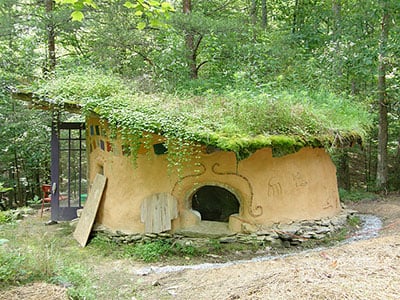[Further Reading]Unit02-Dockside Green
Dockside Green
 The green movement is catching on in many pockets of the world. This is especially true in the construction industry. Today's buzz words, which include global warming and zero emissions, are causing everyday people (not just celebrities) to look for ways to reduce their carbon footprint. Purchasing an environmentally-friendly home is a good investment for those who are concerned about their own health and the well-being of our planet. Based on this trend, entire districts, known as eco-communities, are being designed with green initiatives in mind. One of these communities is Dockside Green in the Canadian province of British Columbia. Its goal is to become the world's first zero-emission neighbourhood.
The green movement is catching on in many pockets of the world. This is especially true in the construction industry. Today's buzz words, which include global warming and zero emissions, are causing everyday people (not just celebrities) to look for ways to reduce their carbon footprint. Purchasing an environmentally-friendly home is a good investment for those who are concerned about their own health and the well-being of our planet. Based on this trend, entire districts, known as eco-communities, are being designed with green initiatives in mind. One of these communities is Dockside Green in the Canadian province of British Columbia. Its goal is to become the world's first zero-emission neighbourhood.
Dockside Green is a mostly self-sufficient community along the harbour front of Victoria, the capital city of British Columbia. The community is home to around 2,500 people and includes residential, office, and retail space. It includes a variety of environmental features, some of which are unprecedented.
The planners and builders of Dockside Green have the environment in mind with every choice they make. They ensure proper ventilation and guarantee residents clean air indoors. Interior and exterior building materials, such as paints and wood, are natural and non-toxic. One of these is bamboo which is used because it's very durable and can be grown without the use of dangerous pesticides.
Energy efficiency is one of the top priorities in eco-communities like Dockside Green. Not only do energy-efficient appliances and light fixtures reduce the environmental impact of heating, cooking and lighting, they also save residents money. Dockside Green claims that home owners use 55% less energy than the average Canadian. Though many residents are sharing space by investing in condo-style living, they have their own individual utility metres for electricity and gas. Studies show that people use around 20% less energy when they are billed for exactly what they use.
Eco-communities also take the future into account by recycling waste and reducing carbon emissions. At Dockside Green, waste water is treated and reused on-site for flushing toilets, and a biomass gas plant converts waste wood into a renewable form of gas for hot water systems, stoves and gas heaters. The community also reduces carbon emissions by using local suppliers for all their transport and maintenance needs, and residents are encouraged to use a mini transit system and join the community's car share program.
The first two stages of development at Dockside Green were completed in 2011, and additional plans to increase sustainability are in the works. Similar green communities are now found all over the world, especially smaller ones known as ecovillages or "intentional communities". Most have 50 to 150 residents, all of whom are trying to reduce their carbon footprints and create a model for sustainable living in the future.